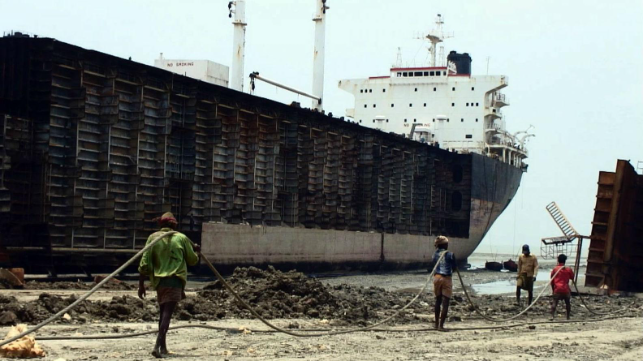Scrapping Accelerates in 2021 with Prices Heading Toward All-Time High

With scrap prices closing in on a 13-year high, the rate of ships being sold for demolition has accelerated dramatically during the first half of 2021. According to a new analysis from the online valuation provider VesselValue, over $1 billion worth of vessels were sold for scrap in the first six months of 2021 with prospects for the rate to continue and possibly increase for the remainder of the year.
“Extreme scrap prices, costly new environmental regulations (sulfur cap, BWMS, etc.) and an ever-aging fleet was the perfect blend to see scrapping numbers blown out of the water and some impressive records to be set,” writes VesselValue in its analysis of the market in 2021. They report in total 275 vessels were sold for scrap in 2021 with a total of 11.9 million DWT. This represents a 40 percent increase of 2020 and even a 33 percent increase over 2019 when markets were not impacted by the pandemic.
The ship sales are coming primarily from segments of the tanker, dry bulk, and offshore markets, which have experienced the most significant financial impact from the repercussions of the pandemic on global trade. Nearly half of all the cargo vessels sold for scrap this year have come from the tanker markets with the total of 131 sold representing a four-fold increase over the past two years. In May, trade industry group BIMCO had reported that the demolition rate for product tankers was on course to break an 11-year old record.
“It would not be a surprise if tanker scrapping continues to grow as earnings continue to remain at extremely low levels,” writes VesselValue. “However, with containers and bulkers making so much money, and tankers having done so previously, owners are hanging onto their vessels despite the huge temptation from scrapping prices.”
The rebound in the steel markets and skyrocketing steel prices have been a major temptation for owners of unproductive and aging vessels. VesselValue reports that the previous ten-year high of $560 per lightweight ton was quickly surpassed in June and continues to rise. Scrap prices are 86 percent higher compared to a year ago, and “If this growth rate continues then the 2008 all-time high of $754 per LT will be reached by the end of the year.”
Especially hard hit by the combination of the long-term downturn in the oil and gas markets and the impact of 2020, financial pressures have forced the offshore sector to scrap an increasing amount of non-core assets. “The Mobile Offshore Drilling market is experiencing one of the toughest periods since the oil price crash of 2014/2015,” writes VesselValue contributing to the uptick in scrap sales. While starting from a small base, scrapping in the dry bulk segment is up 60 percent as several owners took advantage of the high scrapping rates selling older tonnage.
The high freight rates however have meant that the container and bulker segments have mostly turned their back on the scrap market, either operating their ships or opting for a lucrative secondhand market. Containership scrapping numbers are down 78 percent according to the analysis with most of the sales coming from smaller feeder vessels, 25 years or older.
Among the countries operating the breaker yards, Bangladesh took more than half of all the vessels in the first half of 2021 despite strong competition from Pakistan which offered more competitive pricing in April.
“If the steel demand continues to rally the demolition scrap price for shipping, then it is likely that scrapping numbers will increase throughout the year, especially if bulker and container rates begin to soften,” concludes VesselValue. However, even with the prospects of record-high scrap prices, they believe container owners especially are likely to hold on to their tonnage but that tanker owners who were hoping for a full market recovery might be more tempted by the high scrapping prices.
